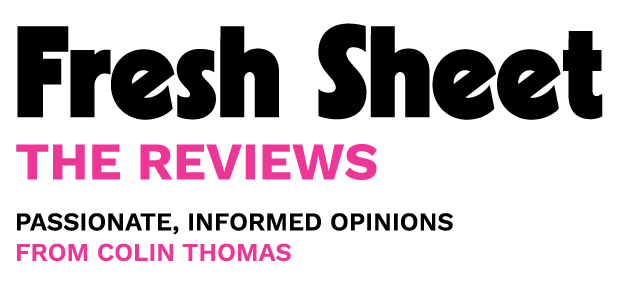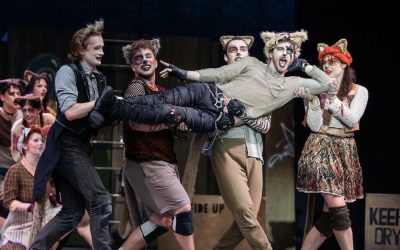 This is what performance — what gathering — can be.
This is what performance — what gathering — can be.
Last Thursday, I attended and participated in Sii ye’yu (friends, relatives), an event created by Mortal Coil (a theatre company headed by settler artists) and Tsatsu Stalqayu (an Indigenous family group also known as the Coastal Wolf Pack).
I don’t know exactly how to explain this, but, as soon as elders Alec Dan and Iona Paul started to welcome us to Sən̓aʔqw (Vanier Park), I landed in my body — and I landed in the place like I’ve never done before. I’ve lived in Kitsilano for over 40 years and, as Dan spoke about Sən̓aʔqw and the other Indigenous settlements that once populated this part of the coast and the banks of the Fraser River, I could feel my understanding of the territory suddenly gaining depth. It was like I’d been seeing the land in two dimensions and now it was in 3D. That was unexpected — and I was grateful.
I could open up so easily I think because Dan and Paul welcomed us in such a grounded, generous way. (Please understand that, when I say this, I’m not discrediting rage.) Acknowledging the tragedy, the crime of residential “schools” and the horrifying discoveries of the remains of so many children, Paul said that her own grandchildren would be performing later in the evening. “When you look at my grandbabies,” she said, “you think of those babies. What would have been. What could have been. What should have been.” But this wasn’t an accusation. It was an invitation to accept — and take responsibility for — our shared reality.
Speaking of sharing, we also got to play around a bit before the main event. Peter Hall, who runs Mortal Coil with Marietta Kozak, distributed herring puppets to a bunch of us —little silver fish supported in groups of two or three by copper wires attached to handles. Hall encouraged us to shake them a bit so they would shimmer as we danced around, practising being in a school.
Then we took a break, during which we were offered sweet bannock with whipped cream and blueberries, and soapberry soda. Our little spoons were made of cedar and smelled fantastic.
I’m describing this in detail because I’ve been worried about the return of theatre; so much theatre, as we knew it before the pandemic, was boring, a pale, underfunded imitation of TV — and Sii ye’yu (friends, relatives) embodied so many of the elements that can make live performance uniquely powerful. It emerged from the communities and the place in which it was performed. It was intimate, sensual, interactive — and charged by urgent concerns. The line between performers and audience members blurred: we shared the air out there and created the event together in shared space and real time. It was a healing assembly.
After the bannock, we got to the main event: Tsatsu Stalqayu, the Coastal Wolf Pack, performed songs and dances — and we herring got to swim again in the grand finale. None of this was folkloric. A big part of the excitement came from experiencing these songs and dances as part of a living, evolving tradition — and as a collaboration between cultures.
The regalia looked fantastic — feathered headpieces and rust-coloured fibrous clothing that referenced cedar garments. One woman’s cedar hat had copper woven into it and she was wearing big copper earrings. Fantastic.
And Mortal Coil added another level: a stilt-walking heron, eagle, and hummingbird — and a 12-foot-tall ancestor puppet that became uncannily animated thanks to a visible team of operators.
The songs were surging waves of sound and the dancing reminded me of how good it is to have a body and to share that joy with others. I keep flashing on the grace of the women performing a dance about collecting tubers, which is one of the things that folks did at Sən̓aʔqw.
Kozak and Hall, the driving forces in Mortal Coil, will be retiring within the next few years. Kozak says their work with the Coastal Wolf Pack is, in many ways, the culmination of their careers. “It’s been an incredible journey for all of us,” Kozak wrote to me in an email, “and for Peter and me, it’s turned on its head all the Western ideas of singular artists working on their own creating art — what we do with CWP is so organic that it’s a whole different ball game.”
There’s so much to learn from it.
Last Thursday’s was the only performance of Sii ye’yu (friends, relatives), but it’s part of Grand Acts of Great Hope, an initiative of the National Arts Centre’s English Theatre. A recording of last Thursday’s performance will be made into a five-minute film. The teaser will be released on September 9, and all of the films of Grand Acts of Great Hope will be available online from September 13 to October 10.
There is a huge number of people to credit. Here’s the link to the program. The core creators of Sii ye’yu (friends, relatives) are Alec Dan, Peter Hall, and Iona Paul. Except for “Paddle to Battle”, which was written by Kevin Seward, and “Musqueam Paddle Song”, the songs were written by Benjamin Leo. The dances are all choreographed by Iona Paul and the rest of the group, and are based primarily on traditional dances.





0 Comments